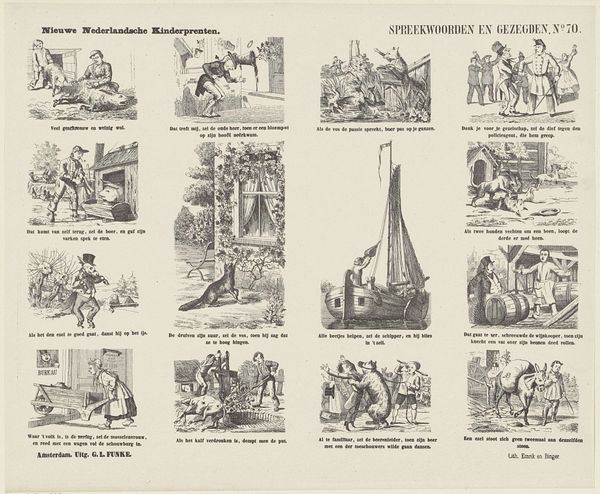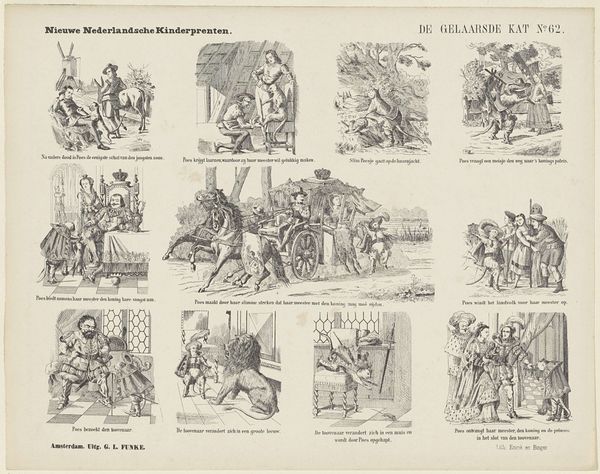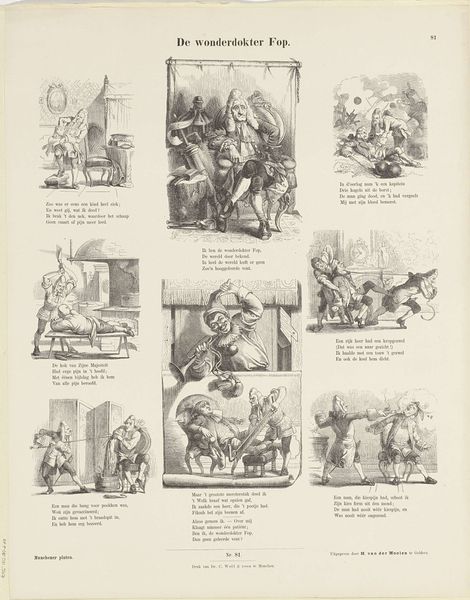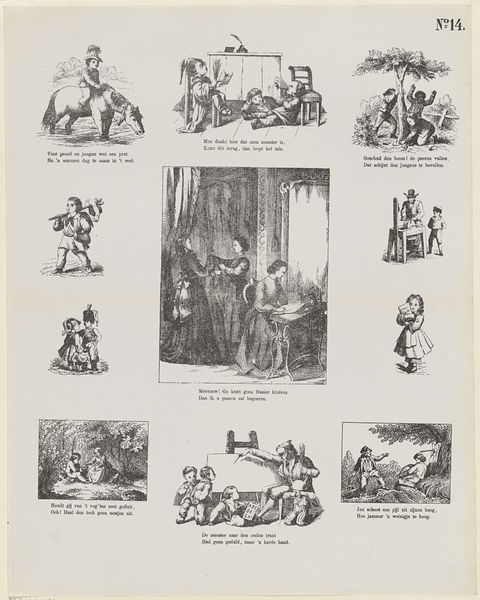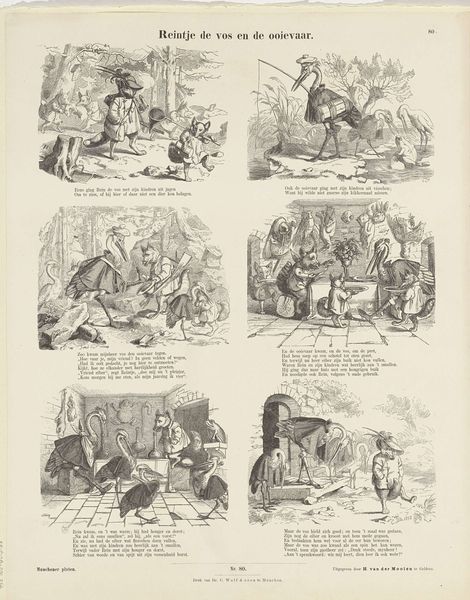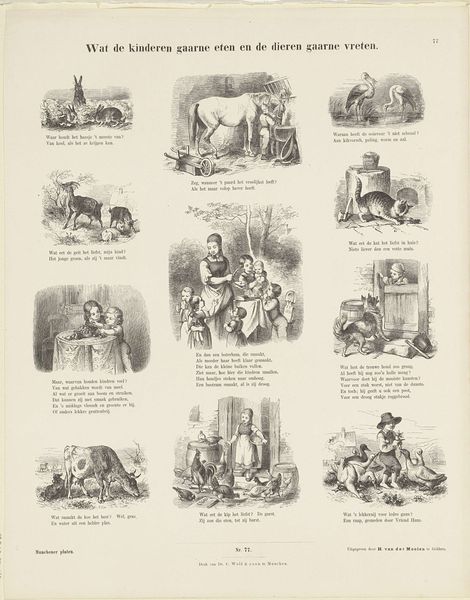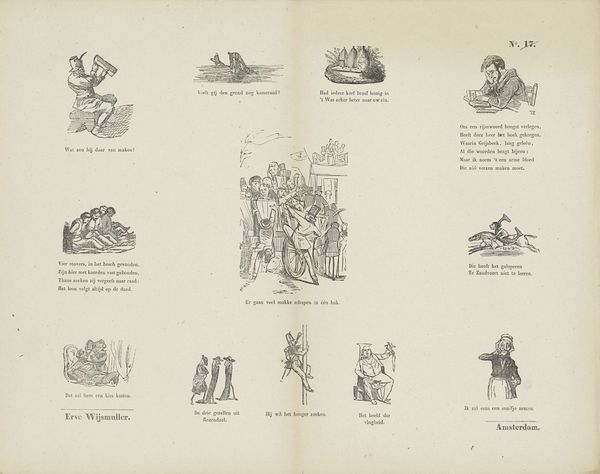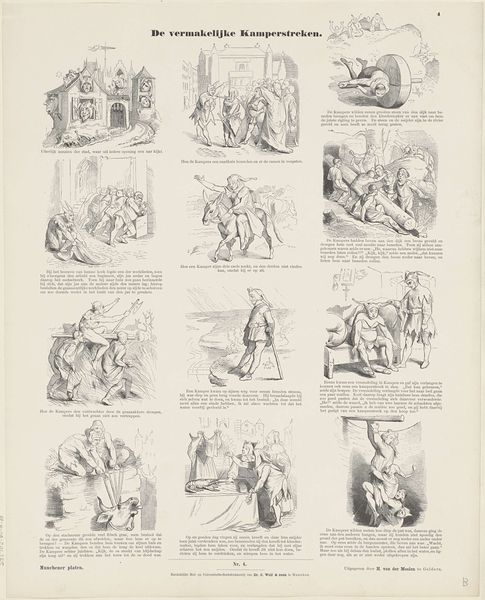
print, engraving
#
narrative-art
# print
#
folk-art
#
genre-painting
#
engraving
Dimensions: height 344 mm, width 429 mm
Copyright: Rijks Museum: Open Domain
Curator: Hello! Welcome, so glad you're here today to talk about "Geschiedenis van Roodkapje", or "The Story of Little Red Riding Hood" by George Lodewijk Funke, dating back to sometime between 1865 and 1875. What catches your eye initially? Editor: I’m fascinated by the way the story unfolds across these little scenes. It reminds me of a comic strip, almost. I’m curious about the choice of using prints – what does that medium bring to the narrative? Curator: Ah, excellent observation! The choice of prints, specifically engravings, offers a unique lens. Imagine a world where color wasn't easily accessible for mass production. These prints became vital tools for educating and entertaining children. Look closer; see how each frame captures a key moment? Almost like the theater, wouldn't you say? What emotions do the stark black and white evoke in you? Editor: There’s a simplicity to it, but also a starkness. The wolf looks… very wolf-like! It makes the danger feel real. But why present it this way, rather than just telling the story? Curator: Precisely! By visually depicting each scene, it reinforces moral lessons. "Stay on the path!" and "Don't trust strangers" become indelibly etched in a child's mind. Do you think children today would connect with this cautionary style of storytelling? Editor: I'm not sure! The images feel more serious, less whimsical, than modern fairy tale illustrations. It's less about fantasy, maybe more about warning. Curator: Perhaps you're onto something. Let's appreciate Funke’s commitment to making this story broadly available to teach the value of safety and, maybe, just a touch of obedience. It’s certainly a unique window into the 19th century's approach to educating youngsters, don't you think? Editor: Definitely. Seeing it this way makes the story feel more grounded and relatable. It has given me so much food for thought.
Comments
No comments
Be the first to comment and join the conversation on the ultimate creative platform.

